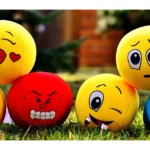Discover the secrets to optimal health and vitality in our latest blog post, ‘Exploring Theory Wellness.’ Dive into holistic wellness theories and practical tips to enhance your well-being.
Have you ever wondered how to achieve optimal health and vitality? The answer may lie in Theory Wellness, a pioneer in holistic health solutions. This innovative approach to wellness is gaining traction thanks to its comprehensive, evidence-based methods that cater to individual needs. But what exactly is Theory Wellness, and why is it becoming so popular? Let’s dive in!
Contents
- 1 Exploring Theory Wellness
- 1.1 What is Theory Wellness?
- 1.2 The Pillars of Optimal Health
- 1.3 Practical Tips for Achieving Optimal Health
- 1.4 Common Myths About Wellness
- 1.4.1 Myth 1: “Wellness is only about physical health.”
- 1.4.2 Myth 2: “You must follow strict diets to be healthy.”
- 1.4.3 Myth 3: “Only intense workouts are effective.”
- 1.4.4 Myth 4: “Mental health issues are a sign of weakness.”
- 1.4.5 Myth 5: “You can’t change your emotional responses.”
- 1.4.6 Myth 6: “Supplements can replace a healthy diet.”
- 1.4.7 Myth 7: “Wellness practices are too time-consuming.”
- 1.5 The Role of Regular Check-Ups
- 2 FAQs on Wellness Theory
Exploring Theory Wellness
Welcome to “Exploring Theory Wellness: Your Gateway to Health and Vitality.” In today’s fast-paced world, achieving optimal health can seem challenging due to the demands of modern life and the prevalence of unhealthy lifestyle choices. However, by delving into the principles of wellness, we can gain a deeper understanding of how to achieve a healthier and more fulfilling life.
This blog post will provide a comprehensive exploration of the core concepts of Theory Wellness, offering valuable insights, evidence-based information, and practical tips to empower you to embark on your wellness journey with confidence and knowledge.
What is Theory Wellness?
Theory Wellness is an integrated approach to health that encompasses physical, mental, and emotional well-being. Understanding and applying these theories can create a balanced and harmonious lifestyle.
The Pillars of Optimal Health
Physical Wellness
Physical wellness involves maintaining a healthy body through regular exercise, proper nutrition, and adequate rest. This section explores the importance of physical activity, balanced diets, and sleep hygiene.
The Importance of Physical Activity Regular exercise is crucial for maintaining overall health. It helps control weight, reduces the risk of chronic diseases, improves mental health, and boosts energy levels. Aim for at least 150 minutes of moderate aerobic activity or 75 minutes of vigorous activity per week, combined with muscle-strengthening exercises two or more days a week.
Balanced DietsA balanced diet provides the nutrients your body needs to function correctly. It includes carbohydrates, proteins, fats, vitamins, and minerals. Focus on incorporating a variety of fruits, vegetables, whole grains, lean proteins, and healthy fats into your meals. Avoid processed foods, excessive sugar, and saturated fats.
Sleep Hygiene Quality sleep is essential for physical health. It allows the body to repair itself and supports brain function. Adults should aim for 7-9 hours of sleep per night. Establishing a regular sleep schedule, creating a restful environment, and avoiding caffeine and electronics before bedtime can enhance sleep quality.
Mental Wellness
Mental wellness focuses on cognitive health and emotional stability. Learn about stress management techniques, the benefits of mindfulness, and ways to cultivate a positive mindset.
Stress Management TechniquesChronic stress can negatively impact mental and physical health. Effective stress management techniques include:
- Exercise: Physical activity can reduce stress hormones and trigger the release of endorphins.
- Relaxation Techniques: Yoga, tai chi, and progressive muscle relaxation can alleviate stress.
- Time Management: Prioritizing tasks and setting realistic goals can reduce stress.
The Benefits of MindfulnessMindfulness involves paying full attention to the present moment without judgment. It can improve mental clarity, reduce stress, and enhance emotional regulation. Practices include mindfulness meditation, mindful breathing, and mindful walking.
Cultivating a Positive MindsetA positive mindset can improve mental wellness and overall life satisfaction. Strategies to cultivate positivity include:
- Gratitude Practice: Regularly reflecting on things you are thankful for.
- Positive Affirmations: Repeating encouraging and empowering statements.
- Surrounding Yourself with Positive Influences: Engaging with supportive and uplifting people.
Emotional Wellness
Emotional wellness is about understanding and managing your emotions. Discover strategies for emotional resilience, building healthy relationships, and finding inner peace.
Emotional Resilience Emotional resilience is the ability to adapt to stress and adversity. Building resilience involves:
- Developing Coping Skills: Learning how to handle life’s challenges constructively.
- Maintaining a Support Network: Having friends, family, or support groups to lean on.
- Practicing Self-Compassion: Being kind to yourself during difficult times.
Building Healthy Relationships Healthy relationships are vital for emotional wellness. Tips for nurturing strong connections include:
- Effective Communication: Clearly expressing your thoughts and feelings while listening to others.
- Setting Boundaries: Understanding and respecting personal limits.
- Showing Empathy: Being understanding and compassionate towards others.
Finding Inner PeaceInner peace involves a sense of tranquility and contentment. Achieving inner peace can be supported by the following:
- Meditation and Mindfulness: Practices that promote mental calmness.
- Engaging in Hobbies: Activities that bring joy and relaxation.
- Spiritual Practices: For some, this may include prayer, reflection, or connecting with nature.
Practical Tips for Achieving Optimal Health
Incorporating Exercise into Your Daily Routine
Finding time for exercise can be challenging, but small changes can make a big difference:
- Schedule Workouts: Treat exercise like a necessary appointment.
- Incorporate Activity into Daily Tasks: Walk or bike to work, take the stairs, or do household chores vigorously.
- Find Enjoyable Activities: Engage in sports, dance, or group classes that you enjoy.
Healthy Eating Habits
Healthy eating is about making informed food choices:
- Plan Your Meals: Preparing meals can help you avoid unhealthy options.
- Read Nutritional Labels: Understand what’s in your food to make healthier choices.
- Portion Control: Be mindful of serving sizes to avoid overeating.
Stress Management Techniques
To manage stress effectively, consider these methods:
- Meditation: Spend a few minutes each day in quiet reflection.
- Deep Breathing Exercises: Practice deep breathing to reduce tension.
- Time Management Skills: Organize your tasks to reduce overwhelm.
Mindfulness and Meditation
Incorporate mindfulness and meditation into your routine:
- Start Small: Begin with short sessions and gradually increase the time.
- Create a Quiet Space: Designate a calm area for your practice.
- Consistency: Practice regularly for the best results.
Building Strong Relationships
Strengthen your social connections with these tips:
- Regular Communication: Keep in touch with loved ones.
- Quality Time: Spend meaningful time together, free from distractions.
- Support Each Other: Be there for friends and family in need.
Common Myths About Wellness
Many misconceptions about wellness can hinder your progress. This section debunks common myths and provides evidence-based information to guide you.
Myth 1: “Wellness is only about physical health.”
Reality: Wellness is a holistic concept that includes physical, mental, emotional, and social well-being. Achieving optimal wellness requires a balanced approach that addresses all aspects of health.
Myth 2: “You must follow strict diets to be healthy.”
Reality: Strict diets can be challenging to maintain and may only provide some of the necessary nutrients your body needs. A balanced diet that includes a variety of foods from all food groups is more sustainable and beneficial for long-term health.
Myth 3: “Only intense workouts are effective.”
Reality: While intense workouts can be beneficial, moderate physical activities such as walking, swimming, or yoga can also significantly improve your health. The key is consistency and finding activities you enjoy.
Myth 4: “Mental health issues are a sign of weakness.”
Reality: Mental health issues are common and can affect anyone, regardless of strength or character. Seeking help and practicing self-care are signs of strength and self-awareness.
Myth 5: “You can’t change your emotional responses.”
Reality: Emotional wellness involves understanding and managing your emotions. You can develop skills to change your emotional responses and build resilience with practice.
Myth 6: “Supplements can replace a healthy diet.”
Reality: Supplements can be beneficial in certain situations but cannot replace the variety of nutrients a healthy diet provides. It’s best to get your nutrients from whole foods whenever possible.
Myth 7: “Wellness practices are too time-consuming.”
Reality: Incorporating wellness practices into your daily routine can be slightly time-consuming. Small changes, such as taking brief walks, practicing mindfulness for a few minutes, or opting for healthier food choices, can significantly impact over time.
The Role of Regular Check-Ups
Regular health check-ups are crucial for early detection and prevention of diseases. Learn about the importance of routine medical exams and screenings.
Early Detection and Prevention
Regular check-ups allow healthcare providers to detect potential health issues before they become serious. Early detection can lead to more effective treatment and better outcomes. For example, regular blood pressure checks can help detect hypertension early, reducing the risk of heart disease and stroke.
Routine Screenings
Routine screenings, such as mammograms, colonoscopies, and cholesterol tests, are essential for identifying conditions that may not have obvious symptoms. These screenings can help catch diseases like cancer, diabetes, and high cholesterol at an early, more treatable stage.
Monitoring Existing Conditions
For individuals with existing health conditions, regular check-ups are vital for monitoring the condition and adjusting treatment plans as needed. This ongoing management can prevent complications and improve quality of life.
Vaccinations and Immunizations
Regular check-ups also provide an opportunity to stay up-to-date with vaccinations and immunizations. These are essential for preventing flu, pneumonia, and other infectious diseases.
Health Education and Counseling
During regular check-ups, healthcare providers can offer valuable health education and counseling. It can include advice on diet, exercise, stress management, and other lifestyle factors that contribute to overall wellness.
Building a Relationship with Your Healthcare Provider
Regular visits help build a strong relationship with your healthcare provider. This relationship fosters better communication, trust, and a more personalized approach to healthcare.
Debunking common myths about wellness and understanding the importance of regular check-ups are essential steps toward achieving optimal health. Wellness is a comprehensive journey encompassing physical, mental, and emotional well-being. Regular medical exams and screenings play a critical role in maintaining this balance by enabling early detection and prevention of health issues. Embrace a holistic approach to wellness and make informed decisions to lead a healthier, more fulfilling life.
FAQs on Wellness Theory
Q. What are Wellness Theories?
Wellness theories provide frameworks for understanding and promoting health and well-being across various dimensions of life. These theories emphasize a holistic approach, integrating health’s physical, mental, emotional, and social aspects. Some critical wellness theories include:
- Maslow’s Hierarchy of Needs: This theory suggests that individuals are motivated by a series of hierarchical needs, starting from basic physiological needs and moving up to self-actualization. Achieving higher levels of wellness involves fulfilling these needs progressively.
- The Wellness Continuum: Developed by John Travis, this model illustrates wellness as a dynamic process that ranges from pre-mature death on one end to high-level wellness on the other. It emphasizes that wellness is more than the absence of disease; it involves actively pursuing health-enhancing behaviors.
- The Biopsychosocial Model: George Engel proposed this theory, which posits that health and wellness result from the interaction between biological, psychological, and social factors. It encourages a comprehensive approach to health care that addresses all these dimensions.
- The Wheel of Wellness: Created by Jane Myers, this model identifies several interconnected dimensions of wellness, including physical, emotional, intellectual, social, occupational, spiritual, and environmental health. It suggests that balance among these dimensions leads to overall well-being.
Q. What is the Concept of Well-being in Health?
Well-being in health refers to a holistic state of being comfortable, healthy, and happy. It goes beyond the mere absence of illness and includes various physical, mental, emotional, and social dimensions. Critical aspects of well-being in health include:
- Physical Well-being: Maintaining a healthy body through regular exercise, balanced nutrition, adequate sleep, and preventive health care.
- Mental Well-being: Ensuring cognitive health through activities stimulating the mind, promoting learning, and supporting mental clarity.
- Emotional Well-being: Understanding and managing emotions, developing resilience, and maintaining a positive outlook on life.
- Social Well-being: Building and maintaining healthy relationships, engaging in social activities, and having a sense of belonging and support.
Q. What is the Difference Between Well-being and Wellness?
While the terms “well-being” and “wellness” are often used interchangeably, they have distinct meanings:
- Well-being: This term refers to a broader concept encompassing comfort, health, and happiness. It is a holistic state that includes physical, mental, emotional, and social aspects. Well-being is the outcome or result of various factors contributing to an individual’s quality of life.
- Wellness: This term focuses more on making choices that lead to a healthy and fulfilling life. Wellness involves intentional actions and lifestyle choices aimed at improving health and well-being. It is often seen as a journey or practice that includes regular exercise, healthy eating, stress management, and other health-promoting behaviors.
Q. What is the Concept of Well-being of Happiness?
The concept of well-being or happiness, often called “subjective well-being,” involves self-assessment of their joy and life satisfaction. It includes several components:
- Emotional Balance: Experiencing more positive emotions than negative ones. This balance contributes significantly to overall happiness.
- Life Satisfaction: Reflecting on life and feeling content with achievements, relationships, and experiences.
- Purpose and Meaning: Having a sense of direction and meaning in life contributes to long-term happiness and fulfillment.
- Engagement: Being fully involved and interested in activities, whether in work, hobbies, or social interactions, leads to a state of flow.
- Positive Relationships: Building and maintaining healthy and supportive relationships enhances emotional and social well-being.
Conclusion
Theory of Wellness offers a comprehensive approach to achieving optimal health and vitality. You can transform your life by understanding and implementing the principles of physical, mental, and emotional wellness. Start your wellness journey today and take the first step towards a healthier, happier you. Remember, your well-being is a lifelong journey; every small step counts. So why not take the first step and explore what Theory Wellness can do for you?
Read more articles on Health and Wellness.
You might like to read:
https://curevigor.com/bloom-nutrition-everything-you-need-to-know/










